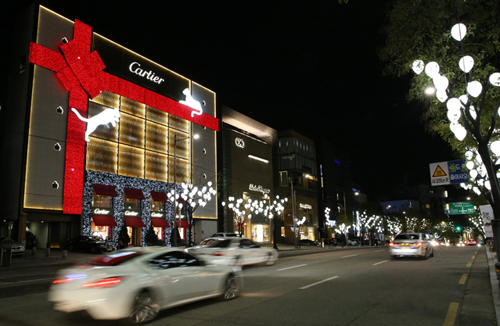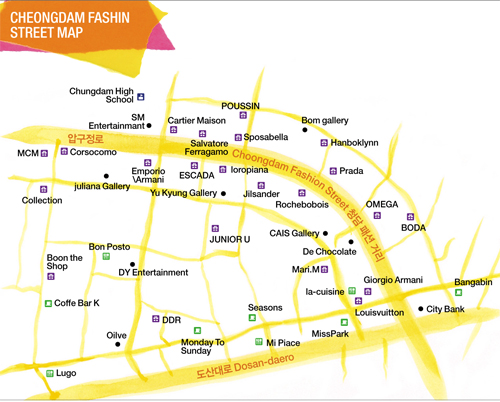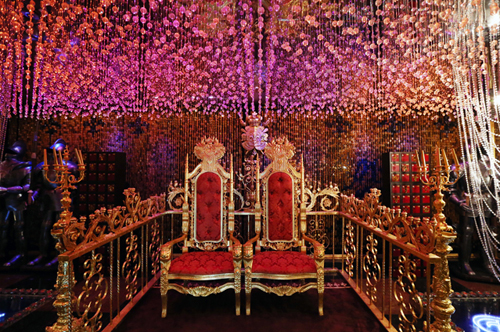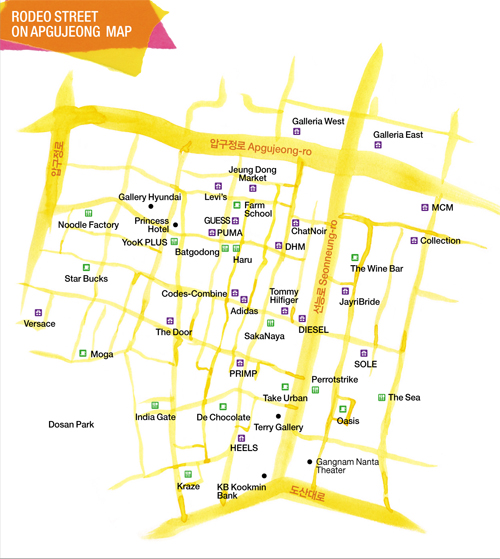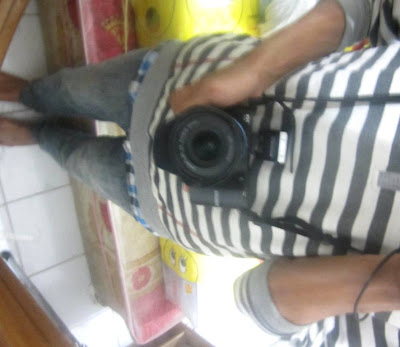In Seoul, Gangnam Frugal Style
By SETH KUGEL
Seth Kugel for The New York Times Rainbow, a hippie-inspired, take-off-your-shoes-and-sit-on-the-floor spot.
Last summer, Korea started singing along to “Gangnam Style,” by the
K-pop star Psy. By October, my nephews in Maryland had joined the
chorus. A couple of months ago in Chongqing, China, I saw women
exercising by doing its signature horse-riding dance in a public square.
In February, Psy
performed before thousands at Brazilian Carnival.
The thoroughly global hit (its video is currently YouTube’s most
watched video ever, with over 1.3 billion views) has made Gangnam, a
15-square-mile district of southeast Seoul known for packed nightclubs,
pricey boutiques and ubiquitous plastic surgery clinics, into a newly
magnetic destination.
I normally avoid such spots — a matter of both budget and preference —
but during a recent trip to South Korea, I couldn’t resist the
challenge: Would it be possible to spend three days in a district
defined by opulence without hyperextending my budget?
Not only was it possible, it was easier than pretending to ride a
horse. And if you take the time to deconstruct the song, you’ll realize
why: this is an upscale neighborhood where, for the price of a cup of
coffee or a tube of lipstick, you can spend an afternoon pretending to
be rich.
In the video,
Psy pokes fun at the poseurs who arrive from more humble neighborhoods.
But because they are there, businesses have responded. Yes, there are
expensive restaurants and high-end boutiques beyond a normal person’s
means. But there are also plenty of opportunities to eat, drink, dance
and shop for very little. Call it Gangnam Frugal Style.
The New York Times
My visit coincided with the Lunar New Year, which Koreans tend to
spend with family; that reduced crowds but left some attractions, like
the
Pulmuone Kimchi Museum,
closed. (“Who cares,” said Youngpo Hong, a student and one of my local
sources. “I have a kimchi museum in my refrigerator.”)
But most of
Gangnam was still open for business, especially the area around the
Gangnam Station subway stop, where a honeycomb of crowded, neon-lit,
mostly pedestrian alleys are home to restaurants, bars and clubs —
stacked vertically to around five stories. The shopping districts closer
to the Han River were also active, as were a handful of cultural
attractions, including the
Bongeunsa Temple
(no admission), a tranquil hillside Buddhist retreat, and the tranquil
park housing the Joseon Dynasty tombs (admission, 1,000 won, or about 95
cents at 1,055 won to the dollar).
It would be a reach to call any part of Gangnam “hip” — an invisible
anti-hipster perimeter wall keeps anyone not in line with prevailing
high-end fashions across the river in Hongdae — but the hottest spot
right now is Garosu-gil, a tree-lined shopping street near the Sinsa
subway stop packed with cafes and boutiques.
Seth Kugel for The New York Times Embracing the hit song.
Psy makes multiple references to coffee in the song, and no wonder:
the quantity of cafes on and around Garosu-gil is mind-boggling. I
decided to start my exploration of the area with a quick survey. Though
the coffee is generally good, most customers seem to care little about
fair trade or single origins; the point is to see and be seen.
The best
example of this in Garosu-gil is
Coffeesmith,
a monstrous, multitiered space barely nicer than a decent Starbucks,
but so popular with Seoul’s stilettoed, Americano-drinking populace that
even with the reduced holiday crowds, it was hard to get a table.
At first glance prices seemed high — 4,000 won for an espresso? But
that really is just a liquid license to sit for hours among groups of
20-something women preening, giggling over smartphones and sometimes
chatting with young men in stylish, slim-fit jackets and even the
occasional tie.
Significantly more intimate and mildly less of a scene, Bloom &
Gouté sits one block west from the main drag, a classy combination cafe
and flower shop. (Flowers adorn each table, often placed in bottles
that, appropriate to the local emphasis on vanity, once held beauty
products like Aesop Oil-Free Facial Hydrating Serum.) Lattes are a
7,000-won price of admission; a better deal was to be found at
Coco Bruni,
a cute spot offering 3,000-won espressos. Here there seemed to be a
focus on the actual product: a young barista pulled and tossed at least
three shots until he was satisfied with my order.
Shopping options are divided into high-end spots along the main drag
offering Korean brands — good for browsing — and small boutiques
featuring more offbeat items. A faux-rustic shop called
Farmer
was full of handmade accessories for women; colorful earmuffs, hats and
hair clips, many under 10,000 won, dominated during the freezing Seoul
winter.
A friend, Eun Young Koh, told me Koreans on a budget often
relieve stress by purchasing a small item like a pair of socks — I
recommend doing so at a Korean chain called Aland, where I found a
7,900-won blue-and-red-striped pair. (I admit to a brief surge of
post-purchase dopamine.)
Seth Kugel for The New York Times Dancing at Bam-gwa Eu-mak Sa-I, a relatively affordable club in the Gangnam district.
Here’s the bad news for shoppers: Garosu-gil is too adored for its
own good, and a global invasion has begun. As of my trip, a four-story
outlet of the South California brand Hollister was the latest; inside, I
found throngs of 20-something fashion lemmings browsing as a sound
system blared the lyrics “Oh it’s so cliché …” Exactly.
Solace can be found at one of Gangnam’s cheap eating options. Just
about every meal I had was under $10. There is a variety of jajangmyeon —
Korean-Chinese takeout spots — but also more upscale places, like
Sawore Boribap, where bargains can hide in otherwise upscale menus. For
example, the boribap, or barley rice, mixed with vegetables and red
pepper paste, is just 8,500 won; and a haemul jeon, a delicious seafood
pancake more seafood than pancake, is 7,000 won. As in just about all
Korean restaurants, under-order rather than over-order: the small side
dishes collectively known as banchan, free and refillable, pick up the
slack. (At Sawore Boribop, they include extra spicy raw oysters — a
major score in my book.)
Near the landmark Kyobo Tower is a restaurant I liked more for its
history than its food. Songtan Budae Chigae serves its signature dish
for 10,000 won a person. Budae chigae, which means “army base stew,”
combines stewed kimchi with meat products American soldiers first
introduced to the hungry populace during the Korean War: hot dogs and
Spam. It may not be gourmet, but it was hearty and satisfying.
Seth Kugel for The New York Times Tak galbi, a chicken stir-fry, at Chum-Chu-Neun Tak-Galbi.
Another money-saver came courtesy of my friend Rob Koh, in a
variation on the tabletop-grilled marinated beef that most Americans
associate with Korean cuisine: Tak galbi, in which chicken is stir-fried
with red pepper paste. Right across the street from my hostel near
Gangnam Station I found Chum-Chu-Neun Tak-Galbi (Dancing Chicken Galbi),
where 9,000 won bought its namesake dish, along with rice cakes, sesame
leaf, cabbage, mushroom and a spicy sauce not for the weak.
In “Gangnam Style,” Psy celebrates women who can sip coffee by day
and let loose at night — and indeed, night life is central to the
Gangnam experience. But since it can be expensive, two friends offered
solutions. Gangnam-raised Si Yeon Kim took me to Rainbow, a
hippie-inspired, Korean-style take-off-your-shoes-and-sit-on-the-floor
spot where groups of four share 28,000-won scorpion bowls and hookahs.
The ambience was plenty unusual but the prices still a bit steep.
Youngpo, a self-proclaimed farm boy, had a better idea, taking me to a
few “beer warehouses,” newly popular spots that pare the drinking down
to its essentials. The warehouses are virtually service-free; at Cube, a
spare space with soft neon lighting and a video projected on the wall,
there was really just a cashier and someone to bus tables — you take
beer (starting at 3,500 won) yourself from refrigerated cases.
My last night called for full-on clubbing, but at the hottest Gangnam
clubs — Octagon and Eden, for example — admission can be 30,000 won or
more and the scene bruising to egos of those over 30. Both Rob and
Youngpo agreed: the solution was Bam-gwa Eu-mak Sa-I (“Between the Night
and the Music”), where the weeknight cover is a more reasonable 10,000
won. Located down a flight of stairs in one of the Gangnam Station
alleys, its exposed pipes, grungy floors, 2,000-won drafts and
infectious ’90s K-pop “oldies” drew an unassuming but fun crowd. In
other words, just the sort of place where someone exhausted from days of
straining toward affluence can let loose — although preferably not to
the point of horse dancing.
IF YOU STAY
Few budget lodging options exist in the Gangnam district of Seoul; here are three at various price points.
Seth Kugel for The New York Times Tight quarters at Morning Guesthouse, one of the budget lodging options in Gangnam.
Morning Guesthouse (third floor, 829-13 Sinseong
Building, Yeoksam-Dong). Six blocks (and about 10 cafes) from the
Gangnam Station spot, up a couple of flights of stairs, tiny, pod-like
guestrooms combine a comfortable bed, a desk with its own Wi-Fi router,
and a bathroom-and-shower cubicle in a seemingly impossibly small space.
I reserved through
booking.com and paid 60,000 won, about $57, for a night.
JA Gangnam (No. 508, Sungwoo Village, 1307 Seocho
4-dong, Seocho-gu). Just a few months old, with only 10 beds and one
very hard-working host named Hyunchung Kim (“Dan” in English), this is a
charmingly personal little spot, right in the middle of the action —
though practically impossible to find without the excellent directions
on
its Web site. It’s also full of the perks you’d expect from hostels: chargers, Wi-Fi, maps, advice, camaraderie. I booked through
hostelbookers.com for 28,000 won a night.
A less conventional lodging option, probably best suited to a single night’s stay, is
Gold Spa
(fourth floor, 143 Saimdang-ro, Seocho-gu), a 24-hour jjimjilbang, or
Korean bathhouse. Enter in the evening (leave your luggage in a locker
at nearby Gangnam Station) and pay the 10,000-won fee. You can spend the
night in simple bunk rooms (floor mats and blankets are provided).
Divided by gender, men and women lounge in hot and cold pools, steam
rooms and saunas and come together on another floor for snacks,
socializing and a few additional hot rooms.
Source:
http://frugaltraveler.blogs.nytimes.com/2013/02/26/in-seoul-gangnam-frugal-style/



















